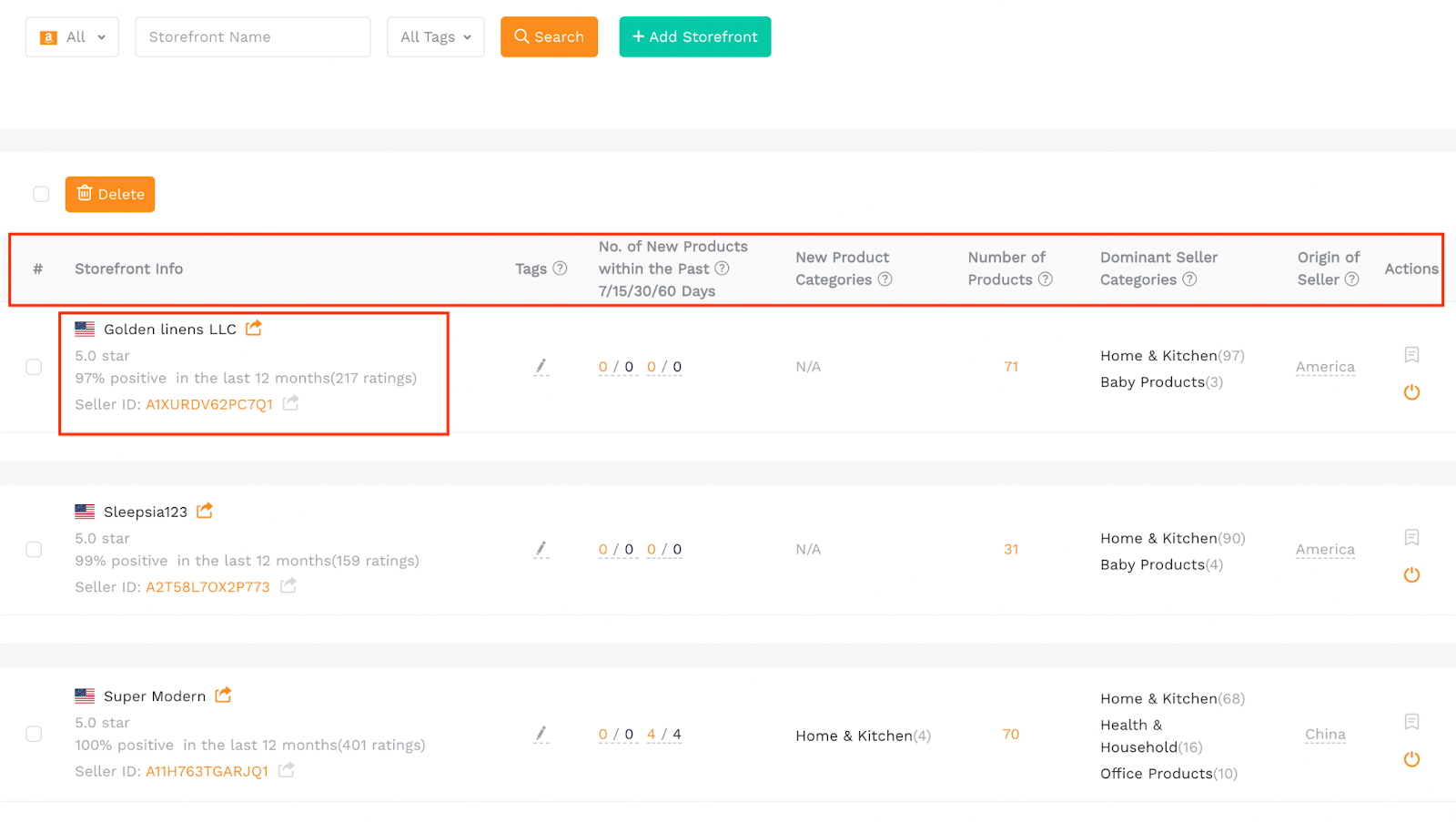There are many ways to select products based on data, such as Amazon’s Best Seller ranking, SellerSprite’s Product Research to select products that meet the established criteria or finding opportunity in SellerSprite’s Market Research. This new function - Storefront Tracking is also a method of selecting products.
By using Storefront Tracker we can monitor our competitors and to be the first to know competitor's newly released products.
What you need is to open any of your competitors' storefront and grab sellers’ ID.
Come back to Seller Sprite and add a storefront ID here. This storefront has been successfully added and you can see it from here.
Check the storefront information, including the name, reviews in the last 12 months, the star rating, the seller ID, and the storefront link.
The basic information of storefront can help us roughly understand this storefront, and compare it with our own. You see below the Sellers we have added into Storefront tracker previously. This seller has 71 products under its seller account.
Here you can see Company name, Feedbacks here as well.

The Storefront Info column posits 4 pieces of general Amazon seller information: name, average consumer rating, reception within the past 12 calendar months alongside number of ratings within the same, and unique Seller ID.
The Tags column posits the custom organizational tag(s) associated with the shown storefront.
The Number of New Products within the Past 7/15/30/60 Days column shows the number of listings published by the seller within the past 2 months. All listings published within the past 7 days show on the left and all listings published, cumulatively, within the past 60 days show on the right.
The New Product Categories column indicates the primary categories of new products published by the seller within the past 2 months. Beside each category lies a number indicating the amount of listings published within said category. These categories may serve to indicate competitor direction.
The Number of Products column posits the total number of products to be found in the particular storefront.
The Dominant Seller Categories column sets details and divides the product categories of the storefront’s Top 100 Listings. If a storefront contains less than 100 listings, then the total number of products, and their categories, will be shown here.
The Origin of Seller column offers the primary location of the Amazon seller.
The number of new products that have been launched in the last 7/15/30/60 days. Click the number to view the specific new product and its data of each dimension. If a product performs well, you can click the “Market analysis” button to further analyze.
If you click that you are gonna see those products.
It is the main category of new products that have been launched in the last 60 days. On the right side you can see the origin of the country of sellers.
For the newly added storefront, it needs a while to see the data of each metrics.
System updates once a day.
If you want to stop tracking, just click the “Stop Tracking” button below, OR, If you wanna add any notes just click here and add your note to check later.
So guys this is a brief view of Storefront tracker. You can track any of your competitors and see what kind of products they launch and how many sales they make for different products. Write below if you have any questions.Thank you.
All Comments()
/
My Comments
Hottest
/
Latest


User Comments